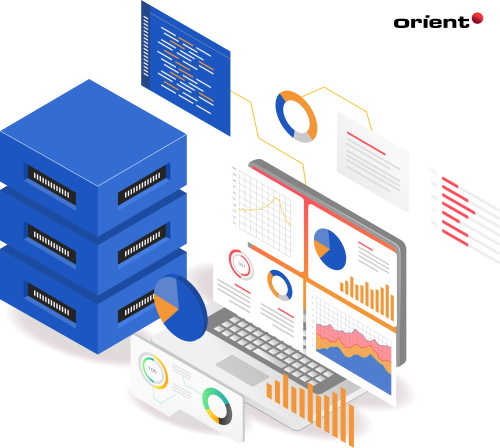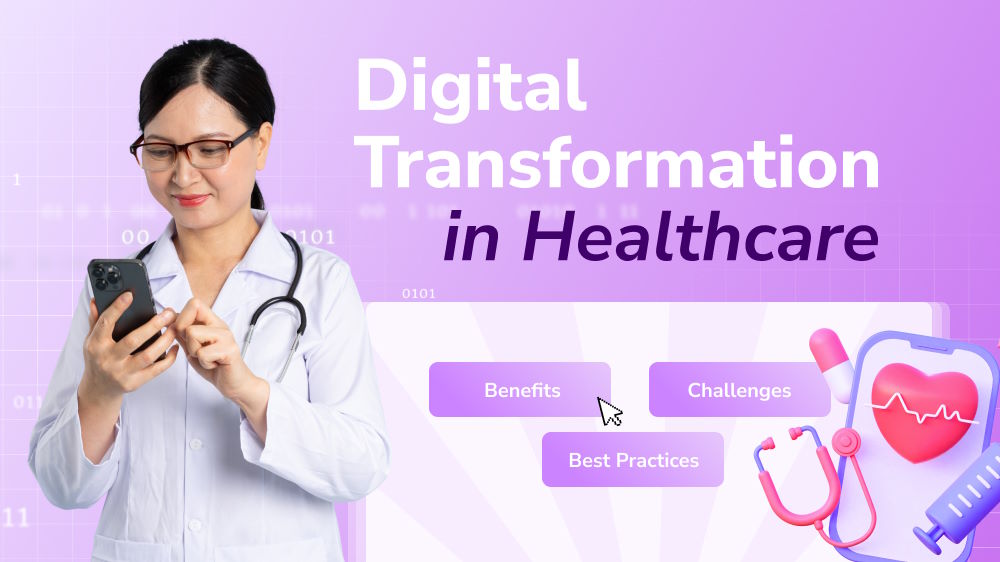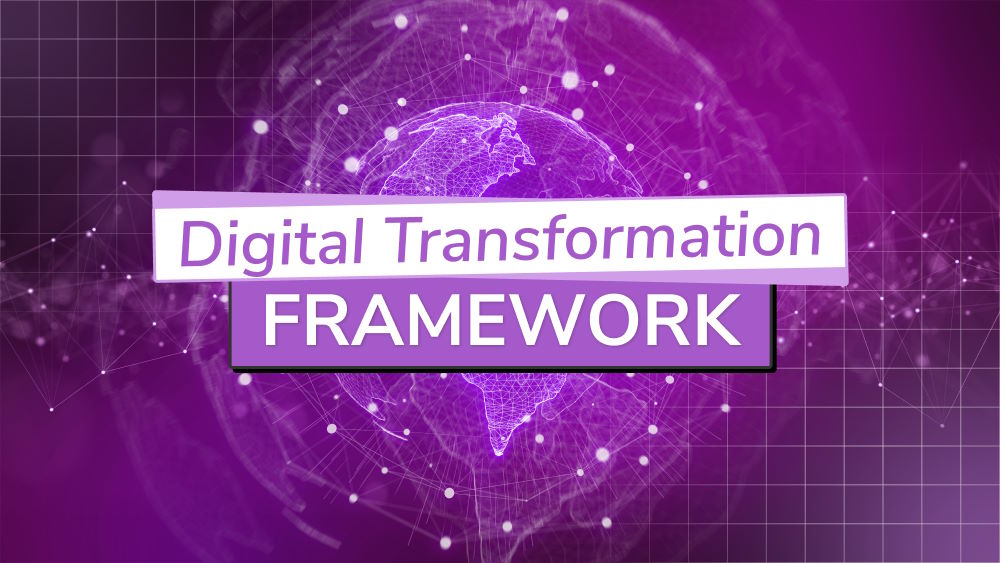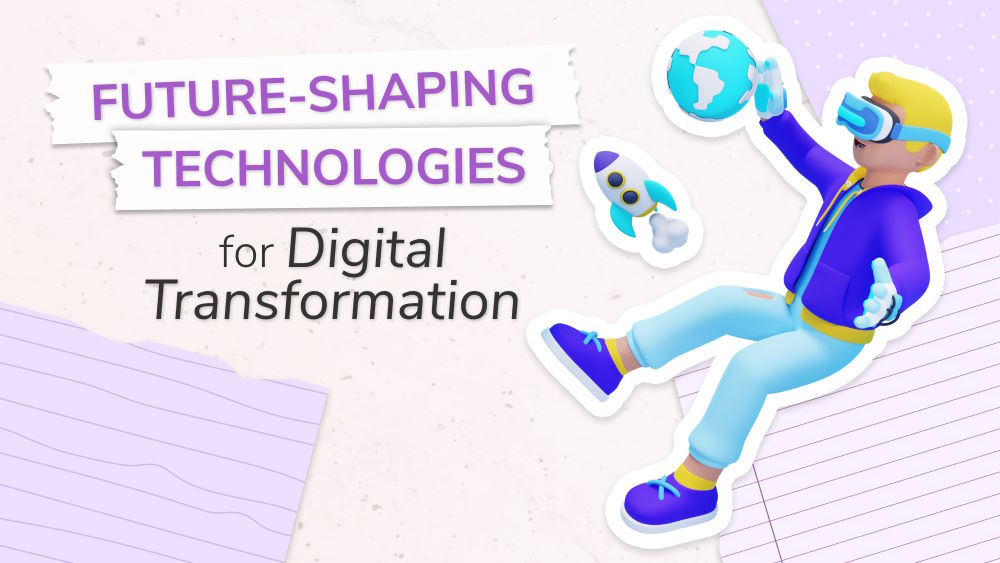
A Practical Approach to Implementing a Winning IT Transformation Strategy
Today’s dynamic technological landscape asks for constant adaption to stay in the game. A winning IT transformation strategy is one effective way to do so.
If you have heard of the term ‘digital transformation’ before, but are unsure of exactly what it means, then you are in the right place. That is because, while there is a single, clear-cut definition of digital transformation, what it actually means to a person, or a company, can differ on a case-by-case basis. Furthermore, the way in which companies embrace new technology – why they do it, and how they do it – can vary based on their unique requirements, and what they hope to achieve from the transition.
For this reason, it is important to understand what digital transformation is, and what is driving it. Also, it is important to know how to create a digital transformation strategy, and how to follow through on it in a safe, efficient, affordable, and timely way.
Digital transformation is, at its core, the process of incorporating new digital technology into a business; swapping out old, outdated technology in favor of newer, faster, more efficient, and more scalable solutions.
The purpose of digital transformation is to implement digital technology, as much as reasonably possible, into every aspect of a business, from accounting to product development, project management to customer service, to much more.
There are many factors that influence the demand for digital transformation. The introduction, or widespread adoption, of new technology is a major driver of digital transformation. As was the case when internet-enabled smartphones reached the masses, forcing companies to create mobile-friendly applications and websites.
Other drivers include external global factors, with the COVID-19 pandemic being one of the largest, most prominent catalysts in recent memory.
When a business incorporates new technology into their workflow, there are many reasons why this may be the case. They may need to respond to new customer expectations, to new government regulations, to the emergence of new technology, or an unexpected change in the market due to sociopolitical factors.
Regardless, it is worth understanding what drives digital transformation, so as to improve the odds of anticipating change and responding accordingly with a tailored digital transformation strategy.
Keeping up with customer demand is one of the most challenging aspects of running a business. Failing to keep up with what customers want, whether it be a new product or service, can lead to a major competitive disadvantage and a loss of market share.
To overcome this, companies should listen to their customers. They should take the time to understand what their customers want, what can be improved, and how such improvements can be implemented.
This isn’t just opinion, either, as 85 percent of customers expect consistent interactions across departments, and 66 percent of customers expect companies to understand their unique needs and expectations, according to the 2020 State of the Connected Customer report by SalesForce.
These kinds of measures can have a positive financial outcome as well, with customers being more likely to spend 140 percent more after a positive company experience, according to The True Value of Customer Experiences report by Deloitte.
Companies like Amazon, Google, and Netflix have done a lot to change the way we do things, from streaming movies and television shows to online shopping and using search engines. These companies have become the dominant force in their respective fields, forcing others, across industries, to adapt to the influence of these major players and, in many cases, utilize their services to bolster their own product and service offerings.
The introduction of social media platforms, including Facebook, Twitter, and LinkedIn has also changed how businesses promote themselves, regularly updating their social media profiles with commentary, updates, product launches, company announcements, and much more.
For decades, new technology has been driving digital transformation efforts in many ways. The introduction of the World Wide Web allowed individuals and businesses to connect like never before. Meanwhile, the advent of internet-enabled mobile devices, including smartphones and tablets, meant that companies had to consider the needs of mobile users, by developing and maintaining mobile applications, as well as mobile-friendly versions of their existing websites.
Over the past decade, cloud-based technology has been embraced by companies across multiple industries. The ability to access cloud-based software, computing and networking resources, and data storage, has been a game-changer for companies. No longer do they need to purchase, install, and maintain (as much) physical infrastructure as they used to.
As a result, this has made it easier to make remote work part of the new normal, as employees – who have a secure, reliable internet connection – can work pretty much anywhere, be it at home or the office.
Social, health, political, and environmental factors can help drive digital transformation efforts. The COVID-19 pandemic, one of the biggest catalysts in the digital age, has led to an estimated $6.8 trillion direct investment in digital transformation between 2020 and 2023.
Environmental factors, such as the potential exposure to natural hazards, can also initiate the demand for digital transformation, as is the case for the GFDRR (Global Facility for Disaster Reduction and Recovery). Since 2006, this partnership program has helped over 160 million people in 60 countries gain improved access to risk information over the internet.
Political and government intervention can also influence digital transformation. In December 2022, the US government approved a ban on the use of TikTok on federal government devices, and various Republican-led states and lawmakers are also pushing for a nationwide ban on the popular social media platform due to national security concerns.
When incorporating digital transformation into your business model, there are many aspects to consider.
Most important of all, what effect will it have on your employees, customers, business operations, and products and services?
By answering such questions, you can help improve the effectiveness of your digital transformation business strategy, reducing the risk of employee and customer push-back and the potential for business disruptions.
In this digital age, transformation can have a serious effect on employee productivity, satisfaction, and retention.
When introducing new technology into the workforce, there is the potential for friction, especially for employees who are not as comfortable with technology as other workers, and who may struggle with adapting to new ways of doing things.
To avoid this problem, be sure to include employees in the digital transformation process. Clearly lay out the features, benefits, and advantages of the new technology, in a way that they can easily understand.
Furthermore, be sure to devote time and resources to employee training. Give them the necessary one-on-one training, print material, and video tutorials. And also give them a platform where they can freely ask questions, raise their concerns, and troubleshoot problems they come across. By doing so, the digital transformation process will go much more smoothly, thus reducing, or even eliminating, the risk of employee dissatisfaction.
Will the introduction of digital technology impact the customer experience?
The results can be positive or negative, depending on the type of technology, the problem that it aims to solve, and how well the technology has been implemented. Chatbots, for instance, have received a largely positive response from customers, with 62 percent of customers saying that they would rather use a customer service bot rather than wait for a human agent to answer their requests, according to The Future of Chatbots 2023 report by Tidio.
For this reason, it is important that companies engage with their customers – similar to their employees – when incorporating new digital technology into their business models.
Distributing customer feedback surveys is a great way to learn more about your customers. In particular, how they may perceive your business (in its current state), how they may respond to a new type of technology, and what can be done to make the switch to technology more seamless.
By doing so, companies can use this information to influence the kind of promotional and educational material that they distribute, and even the type of language they use in the UI copy.
Business leaders must consider how digital technologies can, potentially, disrupt day-to-day activities.
Transitioning to new technology can, if mishandled, lead to unexpected downtime, product and service delays, and interruptions to customer queries. If these problems are not anticipated, they can severely disrupt business processes and negatively impact the customer experience. Further risks may include significant data loss, particularly if sensitive company information is left exposed during the transition process.
To alleviate these problems, companies should perform a risk analysis.
How? By identifying the problems that are most likely to occur during the digital transformation, and then coming up with a solution to either avoid or minimize the impact of those risks.
For instance, when transitioning to the cloud, one approach is to adopt a hybrid-cloud method, where only a few aspects of the business move to the cloud, such as data storage or accounting.
This way, the company can maintain their existing physical infrastructure, while slowly, gradually, migrating other aspects of their business to a secure cloud infrastructure.
Doing things step-by-step can reduce the risk of business disruption, even if it comes at the expense of a longer migration.
Digital transformation has the potential to significantly improve the quality of your products and services.
In the age of online shopping, retailers understand the importance of delivering a quick and seamless online shopping experience. Over the past decade, retailers have integrated BNPL (Buy Now, Pay Later) services onto their platforms (enabling customers to enjoy now, worry about the money later), geofencing to help customers find what they need in their local area, and data encryption to stop hackers from intercepting online purchases.
This is just one example of digital transformation pushing the retail industry forward.
Other examples can be seen in the manufacturing sector, where companies like Audi are using Machine Learning to enhance critical quality control processes in its factories, creating a data-driven solution that the company can use to help reduce human error and ensure all cars are built with the same level of precision and accuracy.
With success stories like this, it is important that companies consider the potential of digital transformation, and how - if used properly and correctly - it can help improve the quality of their products and services. Otherwise, they may run the risk of falling behind, while their competitors get in on the action early.
Organizations, across industries, are using the latest technology to drive digital transformation. The most common examples include cloud-based technologies AI and automation, and 5G and IoT devices.
All of these new technologies are having a significant impact on the way businesses operate, the way customers use specific products and services, and the expectations that customers have of specific industries and sectors.
Furthermore, these technologies are driving demand for new service providers, such as cloud providers who are responsible for the installation and maintenance of different cloud-based infrastructures.
Over the past decade, companies have gradually transitioned to cloud-based technologies, greatly reducing the need to install, establish, and maintain their own physical infrastructure.
Since the COVID-19 pandemic, the adoption rate of cloud-based technology has only increased, with a 32 percent increase in cloud infrastructure services spending in the last quarter of 2020.
Some of the most popular examples of cloud-based technologies include Google Docs (which features cloud-based versions of Microsoft Office products such as Word and Excel) and Amazon Web Services, which provides a variety of new technologies for data storage, enhanced networking and computing capabilities, and much more.
AI and automation are being used in many ways for commercial purposes.
This includes big data, where complex algorithms and machine learning are being used to gather information about customers. This has helped companies better understand their customers, including their purchasing habits, so as to improve their online infrastructure and enhance the customer experience.
Automation is being used to automate, what was previously, manually-conducted tasks, such as sending out invoices and payment reminders.
Other examples of automation include automated chatbots, which are programmed to respond accordingly to customer requests via chat, eliminating the need to wait for human agents.
The advent of 5G has led to improved coverage, faster connectivity speeds, and increased bandwidth capabilities in the world of mobile technology. 5G also delivers lower latency, making it easier to remotely operate devices, and even helps autonomous vehicles respond accordingly to last-minute changes to road conditions.
When it comes to IoT devices – that being, internet-enabled devices that can collect, share, and upload data to the cloud – companies are using such devices to monitor the status of their business equipment, such as industrial machinery.
With IoT technology, companies can remotely monitor their equipment from a safe distance – even if they are away from the business premise – to ensure their devices are operating as intended. One such example is the industrial equipment manufacturer, Caterpillar, which uses IoT technology to carry out predictive maintenance and reportedly saves millions of dollars.

There is no denying that digital transformation, whether big or small, is having a major influence on how companies operate today. Those that are most resilient, open to change, are more likely to adapt to unforeseen changes and grow in ways that were previously not possible, as was the case for companies that were already equipped for remote work prior to the COVID-19 pandemic.
Of course, the key to a successful digital transformation strategy is to, as much as possible, understand the primary drivers of digital transformation. Also, identify the areas of opportunity that exist within such a transformation, and then adopt the necessary technology.
How so? In a way that helps your business achieve your short- and long-term goals, while retaining the highest level of business productivity and customer satisfaction.
Today’s dynamic technological landscape asks for constant adaption to stay in the game. A winning IT transformation strategy is one effective way to do so.
Digital transformation in healthcare aims to improve patient outcomes and practice productivity. Learn to leverage the latest technology in your practice.
Unleash your business's potential with digital product consulting. Discover the value of digital product consulting for growth and success.
Don't dive headfirst into digital transformation, no matter how tempted you are. Establish a solid digital transformation framework first.
The time has come for your company to advance by embracing digital transformation technologies. Let's discover the upcoming technologies to get digitalized.





